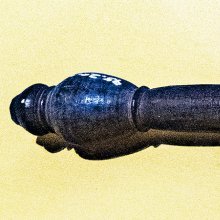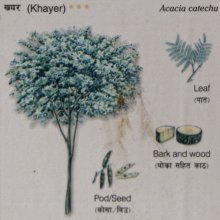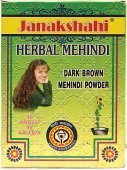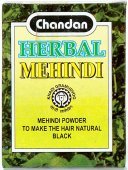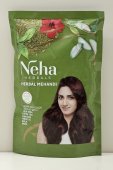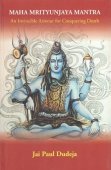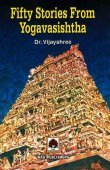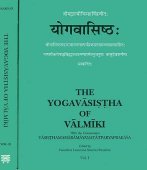Katta, Kāṭṭā: 8 definitions
Introduction:
Katta means something in Hinduism, Sanskrit, Buddhism, Pali, the history of ancient India, Marathi, Jainism, Prakrit, Tamil. If you want to know the exact meaning, history, etymology or English translation of this term then check out the descriptions on this page. Add your comment or reference to a book if you want to contribute to this summary article.
Images (photo gallery)
India history and geography
Source: Project Gutenberg: Castes and Tribes of Southern India, Volume 1Katta (“dam”) is one of the many exogamous septs (division) among the Telugu section of the Devangas (a caste of weavers). The Devangas, speaking Telugu or Canarese, are found all over the Madras Presidency. Devanga is composed of Deva and angam, “limb of god”.

The history of India traces the identification of countries, villages, towns and other regions of India, as well as mythology, zoology, royal dynasties, rulers, tribes, local festivities and traditions and regional languages. Ancient India enjoyed religious freedom and encourages the path of Dharma, a concept common to Buddhism, Hinduism, and Jainism.
Languages of India and abroad
Pali-English dictionary
Source: Sutta: The Pali Text Society's Pali-English DictionaryKatta, (pp. of kantati2; cp. Sk. kṛtta) is represented in Pali by kanta2; katta being found only in cpd. pari°. (Page 183)

Pali is the language of the Tipiṭaka, which is the sacred canon of Theravāda Buddhism and contains much of the Buddha’s speech. Closeley related to Sanskrit, both languages are used interchangeably between religions.
Marathi-English dictionary
Source: DDSA: The Molesworth Marathi and English Dictionarykaṭṭā (कट्टा).—m (About Kolhapur.) A raised place (of stone or wood) along the side of the road, to help travelers to rest their burdens: also a raised mass (of earth or stones) for a seat.
--- OR ---
kaṭṭā (कट्टा).—a ( H) Stout, sturdy, lusty. 2 Clever, smart, expert, adroit, skilful;--used, widely, of writers, speakers, riders, fighters &c. 3 Fierce, furious, ardent, vehement, strenuous, hard, assiduous;--used of laḍhāī-kajjā - mārāmārī - vāda- abhyāsa-adhyayana-vyāsaṅga-bhāṣaṇa-mēhanata. 4 Bold, daring, energetic;--used of masalata a counsel, scheme, measure: powerful, mighty, formidable--an army, an array, or a display.
--- OR ---
kaṭṭā (कट्टा).—m ( H To be cut.) A general slaughter or massacre, cutting up, cutting to pieces. 2 A confederacy or league.
Source: DDSA: The Aryabhusan school dictionary, Marathi-Englishkaṭṭā (कट्टा).—m A raised mass of earth or stones for a seat. a Stout, sturdy, lusty. Fierce, vehement. Bold, daring.
Marathi is an Indo-European language having over 70 million native speakers people in (predominantly) Maharashtra India. Marathi, like many other Indo-Aryan languages, evolved from early forms of Prakrit, which itself is a subset of Sanskrit, one of the most ancient languages of the world.
Sanskrit dictionary
Source: Cologne Digital Sanskrit Dictionaries: Cappeller Sanskrit-English DictionaryKattā (कत्ता).—[feminine] a die.*
Sanskrit, also spelled संस्कृतम् (saṃskṛtam), is an ancient language of India commonly seen as the grandmother of the Indo-European language family (even English!). Closely allied with Prakrit and Pali, Sanskrit is more exhaustive in both grammar and terms and has the most extensive collection of literature in the world, greatly surpassing its sister-languages Greek and Latin.
Prakrit-English dictionary
Source: DDSA: Paia-sadda-mahannavo; a comprehensive Prakrit Hindi dictionary1) Kaṭṭa (कट्ट) in the Prakrit language is related to the Sanskrit word: Kṛt.
2) Kaṭṭa (कट्ट) also relates to the Sanskrit word: Kṛtta.
3) Kaṭṭa (कट्ट) also relates to the Sanskrit word: Kaṣṭa.
4) Katta (कत्त) also relates to the Sanskrit word: Kṛt.
5) Katta (कत्त) also relates to the Sanskrit word: Kṛt.
6) Katta (कत्त) also relates to the Sanskrit word: Klṛpta.
Prakrit is an ancient language closely associated with both Pali and Sanskrit. Jain literature is often composed in this language or sub-dialects, such as the Agamas and their commentaries which are written in Ardhamagadhi and Maharashtri Prakrit. The earliest extant texts can be dated to as early as the 4th century BCE although core portions might be older.
Kannada-English dictionary
Source: Alar: Kannada-English corpusKaṭṭa (ಕಟ್ಟ):—[noun] a place on the bank of a river or tank, where steps are provided for people to go down to have bath.
--- OR ---
Kaṭṭa (ಕಟ್ಟ):—[noun] difficulty a) the condition or fact of being difficult; b) something that is difficult, as a hard problem or an obstacle or objection.
--- OR ---
Kaṭṭa (ಕಟ್ಟ):—[noun] an adjectival morpheme predictable before certain words as an intensifier in the sense 'the very' 'the obsolutely' 'excessively'.
--- OR ---
Kaṭṭa (ಕಟ್ಟ):—[noun] (dial.) a single complete in-and-out movement of the threaded needle in sewing, a stitch or a series of such stitching.
--- OR ---
Katta (ಕತ್ತ):—
1) [noun] the prepared fiber of the husks of coconuts, used to make matting and rope; coir.
2) [noun] a rope or a piece of rope made of this.
3) [noun] (dial.) the skin (of a fruit, seed, etc.) which is removed.
--- OR ---
Katta (ಕತ್ತ):—[noun] any of the shaped sheets of canvas or other strong material spread to catch or deflect the wind, by means of which some vessels are driven forward; a sail.
Kannada is a Dravidian language (as opposed to the Indo-European language family) mainly spoken in the southwestern region of India.
Tamil dictionary
Source: DDSA: University of Madras: Tamil LexiconKaṭṭā (கட்டா) noun
1. Sea-fish, soft dorsal black, attaining at least 20 in. in length Chorinsmus sanctipetri; கடல்மீன்வகை. [kadalminvagai.]
2. See கட்டாம்பாரை. [kattambarai.]
--- OR ---
Kattā (கத்தா) noun < kartā. nominative singular of kartṛ. See கத்தன். அவரே . . . சகத்துக் கொருபெருங்கத்தா [kathan. avare . . . sagathug koruperungatha] (விநாயகபு. [vinayagapu.] 82, 13).
--- OR ---
Kāṭṭā (காட்டா) noun < idem. + ஆ⁸. [a⁸.] Bison, wild cow, Bos gavaeus; காட்டுப்பசு. (திவா.) [kattuppasu. (thiva.)]
Tamil is an ancient language of India from the Dravidian family spoken by roughly 250 million people mainly in southern India and Sri Lanka.
See also (Relevant definitions)
Starts with (+308): Katta murakku, Katta pinnai, Katta-ayam, Katta-k-kampu, Katta-manakku, Katta-veppilei, Kattaanam, Kattabadisu, Kattabalakkadi, Kattabba, Kattabbaka, Kattabbata, Kattabbayuttaka, Kattabhimana, Kattabhimani, Kattacai, Kattacara, Kattacari, Kattaccu, Kattacivi.
Ends with (+36): Adavijilakatta, Anasakatta, Apanakatta, Appayukatta, Arakatta, Arannakatta, Asakatta, Badhakatta, Cakatta, Carukkatta, Chakatta, Cokkatta, Dhammakathikatta, Dhattakatta, Ekatta, Erukkatta, Galakatta, Hattakatta, Illekatta, Javanakatta.
Full-text (+167): Kaha, Cava, Sisa, Vajjara, Katha, Pishuna, Bolla, Alilla, Nivvara, Pramosan-katta, Krit, Atikatha, Itikatha, Yantritakatha, Kathadhurtta, Kattashabda, Katta murakku, Katta-manakku, Okanu-katta, Patanga-katta.
Relevant text
Search found 78 books and stories containing Katta, Kaattaa, Katha, Kathaa, Kaṭṭā, Kattā, Kaṭṭa, Kāṭṭā, Kattaa; (plurals include: Kattas, Kaattaas, Kathas, Kathaas, Kaṭṭās, Kattās, Kaṭṭas, Kāṭṭās, Kattaas). You can also click to the full overview containing English textual excerpts. Below are direct links for the most relevant articles:
The World of ‘Vrata Kathas’ < [April – June, 2006]
On Syllabic Melody of Nannaya’s Poetry < [April – June, 1979]
The Technical Aspects of Short Story < [April – June, 2008]
Folk Tales of Gujarat (and Jhaverchand Meghani) (by Vandana P. Soni)
Maha Prajnaparamita Sastra (by Gelongma Karma Migme Chödrön)
Bodhisattva quality 9: preaching the Dharma disinterestedly < [Chapter X - The Qualities of the Bodhisattvas]
Emptinesses 7-8: Emptiness of the conditioned unconditioned < [Chapter XLVIII - The Eighteen Emptinesses]
2. Debate with the Personalist < [Part 13 - Non-existence of the donor]
The history of Andhra country (1000 AD - 1500 AD) (by Yashoda Devi)
Part 12 - Alladanatha Devaraja and Bhimaraja (A.D. 1283) < [Chapter VI - The Parichchedis (A.D. 1040-1290)]
Jain Science and Spirituality (by Medhavi Jain)
5.3. Metaphysical nature of paramanu < [Chapter 5 - Science in Jainism]
Sahitya-kaumudi by Baladeva Vidyabhushana (by Gaurapada Dāsa)
Text 5.12 < [Chapter 5 - Second-rate Poetry]
Related products
(+1 more products available)
